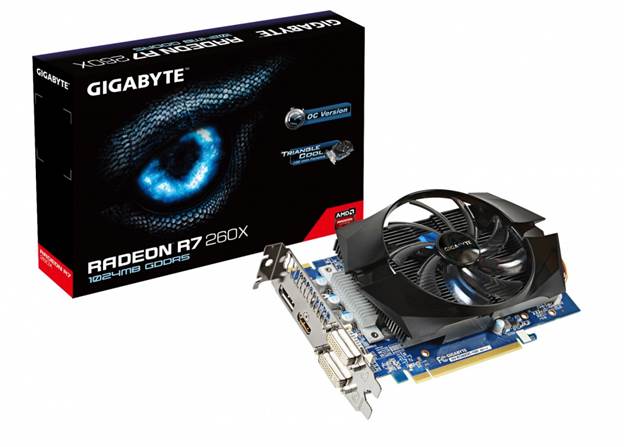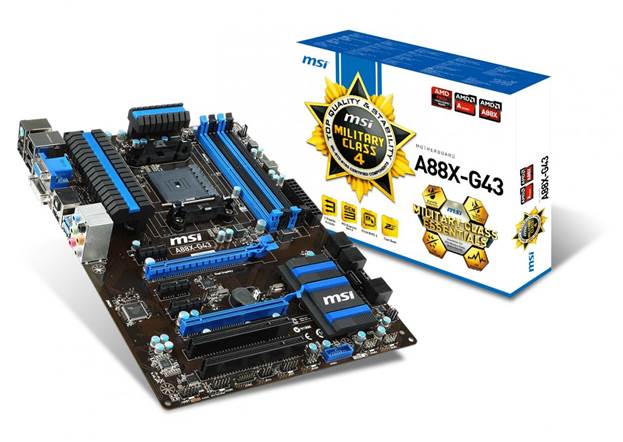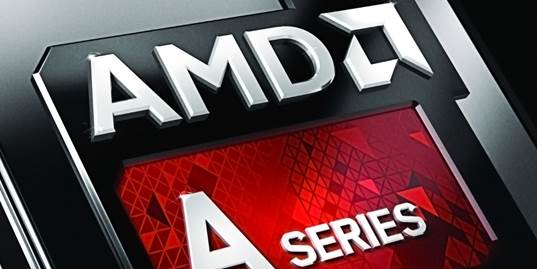APUs like KAVERI are the future for AMD, Reckons Jeremy
Laird, and there are already plenty of compatible motherboards to choose from.
In some ways,
that makes sense. After all, as more and more features migrate onto the CPU or
onto the APU die itself, the chipset becomes less critical. For example, with
an APU based AMD rig, it’s the APU that houses the PCI express controller.
Still, digging up any information on Kaveri supporting chipsets is difficult to
say the least. They simply don’t appear on the main AMD chipset web page.
But we’ve
managed to unearth some interesting information. Kaveri chips themselves sport
PCI express 3.0 support with up to 24 lanes, so there’s bags of external
bandwidth on offer. Also, the integrated Radeon R7 branded GPU is pretty cool
and there’s support for 4K resolutions at 60Hz via DisplayPort 1.2 as well as
dual-link DvI capability. Therefore, you can run a high-end desktop experience,
barring 3D performance, with Kaveri’s integrated graphics.

AMD
Radeon™ R7 series GPUs offer extraordinary performance and spectacular
efficiency.
The most
fully featured Kaveri-supporting chipset – and the one on which our test boards
are based – is A88X. It’s essentially a PCH chip that is codenamed Bolton D-4
and natively supports a maximum of eight SATA 6Gbps ports and four USB 3.0
sockets. There’s also rAID support, gigabit ethernet and up to three old school
PCI interfaces. It’s a relatively up-to-date chipset, then, that ticks most of
the boxes that matter. And that really only adds to the appeal. In other words,
you can have a Kaveri-based system without compromising on features and
functionality. On that note, it’s time to check out some of the best
Kaveri-compatible boards that money can buy.

The
‘Bolton D4’ A88X chipset features upto eight SATA 6 Gbps ports
Console on a
chip? With both the Xbox One and PlayStation 4 now based on AMD CPUs cores and
AMD GCN graphics, there’s a comparison begging with the Kaveri APU. You can buy
Kaveri for a fraction of the price of those consoles, even factoring in the
cost of a new motherboard, memory and storage.
The easiest
comparison to make involves graphics. The top-spec Kaveri is sporting 512 AMD
GCN cores to the Xbox One’s 768 cores and the PS4’s 1,152 cores. Kaveri,
meanwhile, clocks at 720MHz max as standard, compared to around 800MHz for the
consoles. Of course, clocking up a Kaveri is easy enough, and 1,000MHz or so is
definitely possible.
Suddenly,
you’re looking at a cheap APU with roughly the same shader power as a next-gen
console. Very interesting. In reality, however, the comparison starts to look
less rosy if you dig a bit deeper. In terms of ROPs and texture units, Kaveri
scores eight and 32 to Xbox One’s 16 and 48 and PS4’s 32 and 72, but arguably
the biggest snag here is main memory bandwidth.
Kaveri shares
at most around 20GB/s for both CPU and graphics thanks to its dual-channel
64-bit DDR3 memory bus. It’s the weakest part of the Kaveri package and frankly
not up to supporting a proper gaming graphics core. As for how much bandwidth
the two consoles have, much depends on how you do your measuring. But by any
sane metric, both have at least five times the bandwidth of the Kaveri and the
PS4 might be closer to 10.
The harsh
truth then is that Kaveri is neither a console killer nor a console-on-the-cheap.
It’s notably off the pace, but the fact that it is not a million miles away by
a few key metrics is still promising. It’s not hard to imagine a next-gen AMD
APU that closes much of the gap regarding ROPs, texture and memory bandwidth as
well as offering comparable shader power at stock clock speeds.

Kaveri is
neither a console killer nor a console-on-the-cheap.
In the old
days, it was a question of when a high end PC would spank any given generation
of consoles. If a cheap APU can do it, that really would be something.